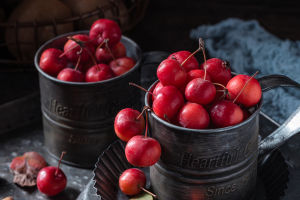Strawberry
When is the best time to go strawberry picking?
What is the best time of year?
How can we pick more and better strawberries in the strawberry garden?
When you see a garden full of strawberries, where do you pick them and what kind of strawberries do you choose?
We have learned some rules, and we will share them with you today.
First of all, find out where the nearest strawberry garden or strawberry farm is through the internet or with your relatives and friends.
We can choose the strawberry plantation with a larger area, so the price may be fairer and there are more strawberries to pick.
Strawberry picking usually takes place in spring around March and lasts for about two months.
If we go early, the price may be more expensive when the strawberries are just on the market.
At this time, you can pick fewer strawberries and try some.
When strawberries are on the market, we can pick a lot of them.
Before we go to the strawberry garden, it is better to wear athleisure clothes that are easy to walk, so it will be more convenient.
Because there may be mud in the strawberry shed, it is easy to get your clothes dirty, and it is very inconvenient to squat or bend down to pick strawberries in skirt and high heels.
And the temperature inside the strawberry shed is high, and there are some small insects and so on. Be careful to prevent bites.
When we go to pick strawberries, remember to bring a basket if it is convenient, or a basket for washing vegetables or something like that, or of course a small cardboard box.
Try not to put the strawberries in a plastic bag after picking them. It is easy to squeeze the strawberries and make them not fresh.
The place where you pick the strawberries may have small baskets and other tools, but it is better to bring your own tools if you want to fill the bags at the end.
At the strawberry garden, or strawberry shed, first consult with the owner of the strawberry farm, about which shed has more strawberries that have not been picked yet, or if there are still many left to pick.
Then you can compare them with each other.
Once we go in, we go all the way inside, and generally, the inside position leaves a larger number of strawberries.
The smartest way is to go out from the inside first.
Don't just pick the biggest strawberries, if you want to eat them the next day, choose strawberries that are only 80% ripe and under-ripe.
If you want to eat them on the same day, you can choose strawberries that are darker in color and ripe. Some strawberries are very small, but when they are ripe, they taste even better than the big ones.
When picking strawberries, be careful not to damage the seedlings. Plants are also alive.
Strawberry is a non-leaping respiratory fruit with, high water content, and thin skin, and very susceptible to damage and decay deterioration.
Therefore, they are not resistant to storage and transportation, and usually have a storage period of 1 to 2 days, which severely limits sales and processing.
The hardness of strawberries after harvesting determines the length of storage time of the fruit.
Generally, the hardness of strawberries decreases quickly after harvesting, and high CO2, low oxygen, and gas conditioning can maintain the hardness to varying degrees.
Postharvest rot of strawberry fruit is mainly caused by microbial infestation, the most frequent and destructive of which is gray mold caused by the pathogen Staphylococcus spp.
Followed by soft rot caused by Rhizoctonia spp.
In addition to rot caused by Hemiptera.
These microorganisms are mainly produced by contact with soil or air before strawberry picking.
To prevent contact with soil and air, plastic film can be used to cover the strawberries before harvesting to stop their contact and prevent infection.

